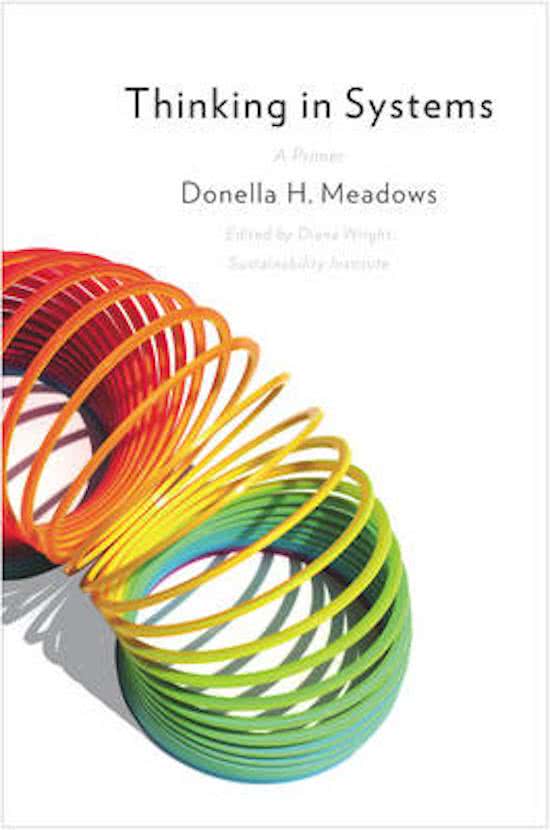Thinking in Systems (D.H. Meadows)
Chapter 1 – The Basics
System an interconnected set of elements that is coherently organized in a way that achieves
something. A system must consist of three kinds of things:
1. Elements
2. Interconnections
3. Function/purpose
Almost everything is a system, except a conglomeration without any particular interconnections or
function.
It’s more than the sum of parts. It may exhibit adaptive, dynamic, goal-seeking, self-
preserving, and sometimes evolutionary behaviour
There is an integrity or wholeness about a system and an active set of mechanisms to maintain that
integrity. systems can change even new systems can arise!
Elements: don’t have to be physical things, intangibles are also elements of a system. There is
almost no end to the process of seeking for elements
o It’s possible to divide elements into sub-elements and sub-sub elements
Interconnections: the relationship that hold the elements together (information for example)
Function/purpose: is not necessarily spoken, written, or expressed explicitly, except though the
operation of the system. The best way to deduce the system’s purpose is to
watch for a while to see how the system behaves
o The word function is generally used for a nonhuman system, the word purpose for a
human one, but the distinction is not absolute, since so many systems have both human
and nonhuman elements. Purposes are not necessarily those intended by any single
actor within the system.
It’s easier to learn about a system’s elements than about its interconnections. It’s even harder to see
functions or purposes.
Systems can be nested within systems and purposes (sub purposes) within purposes. Sometimes it’s
possible to have a conflict between the purpose and sub purposes.
As long as its interconnections and purposes remain intact the system generally goes on being itself,
changing only slowly if at all (even with complete substitutns of its elements)
Storing information: increasing the complexity of the mechanism
Stock: the foundation of any systems; are the elements of the system that you can see, feel,
count, or measure at any given time.
A store, a quantity, an accumulation of material or information that has built up over time.
A stock is the present memory of the history of changing flows within the system
o Flow: are filling and draining, births and deaths, purchases and sales, growth and
decay, deposits and withdrawals, successes and failures
How to read stock-and-flow diagrams?
Stocks are shown as boxes and flows as arrow-headed ‘pipes’ leading into or out the stocks. The
small T on each flow signifies a ‘faucet’: it can be turned higher or lower, on or off. The ‘clouds’ stand
for whenever the flows come from and go to.





